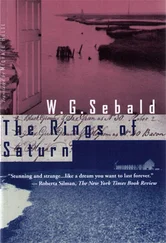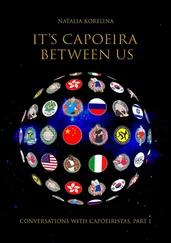Sebald’s patterning amounts to an aestheticizing of catastrophe, and thus it annihilates causality. We appreciate the beauty of the image that the writer discerns, but it adds nothing to our understanding of why things happened as they did. And this is the great problem with a “natural history” of the bombings. The air war over Hitler’s Germany was not a natural disaster, like the eclipse of 1502. It was not random in its causes or its effects; and so, morally speaking, it was worse than a natural disaster. The bombings may have the physical impact of an earthquake, but they cannot be understood in the same way, because to do so is to ignore the fact that this catastrophe was man-made, a human action, and thus more complicated and more terrible than another inevitable repetition of nature’s rich but meaningless pattern of disaster. We must grieve for the terrible loss of innocent life that occurred in every arena in which World War II was fought, but we must also recognize that Hitler’s aggression needed to be stopped.
In light of Sebald’s views regarding art and memory, his arguments about the absence of German literature on the Luftkrieg read a bit ironically. For this time the impairment is not a gap in memory, it is a gap in literature. But as we have seen, Sebald looks to art to fill gaps in memory, and the air war is his own biggest gap.
I grew up with the feeling that something had been withheld from me — at home, in school, and also by the German writers whose books I read in the hope of being able to find out more about the enormity in the background of my own life.
I spent my childhood and youth in a region on the northern edge of the Alps that was largely protected from the immediate effects of the so-called hostilities. At the end of the war I was just one year old and thus can hardly have retained impressions based on real experiences from that time of destruction. But even today, when I see photographs or documentaries of the war, I feel as if I stemmed from it, so to speak, and as if a shadow of these horrors, which I did not experience at all, had been cast over me from which I would never escape.
I sympathize deeply with Sebald’s desire to resurrect a memory he never experienced. I have a similar desire to “remember” the Holocaust, which casts a shadow (to borrow his phrase) over my own life and that of my family. But gaps in memory are experience that is forever lost; and art cannot take its place. At the end of The Emigrants , the narrator visits an exhibition of photographs from the Lodz ghetto, and among them he sees a photograph of three women around the age of twenty behind a loom.
The light falls on them from the window in the background, so I cannot make out their eyes clearly, but I sense that all three of them are looking across at me, since I am standing on the very spot where Genewein the accountant stood with his camera. The young woman in the middle is blonde and has the air of a bride about her. . I wonder what the three women’s names were — Roza, Luisa and Lea, or Nona, Decuma and Morta, the daughters of night, with spindle, scissors and thread.
I am strangely moved by this passage each time I read it, because the young woman in the photograph could have been my own grandmother, who was blonde and whose family owned a textile factory in Lodz. I imagine her behind the loom, spinning out my own fate: to pace the same ground over and over, looking for the source of the shadow that still darkens my world. Yet such a connection is dangerous, because it illustrates the illusory workings of art against memory. My grandmother is not a quasi-mythological figure peering out from behind a loom; she is a real person whose experiences during the Holocaust cannot be subsumed in the cycle of life’s sorrows. I do not know what she looked like as a young woman, but my imagining her behind Sebald’s loom, like Sebald’s invocation of Altdorfer or Virgil to describe Nuremberg, merely substitutes an artistic image for a blank space. The blankness, however, is closer to the truth.
When it seeks to do the work of memory, art may be a source of illusion. And Sebald may have had his own doubts about his endeavor. As he wrote in The Rings of Saturn :
That weavers in particular, together with scholars and writers with whom they had much in common, tended to suffer from melancholy and all the evils associated with it, is understandable given the nature of their work, which forced them to sit bent over, day after day, straining to keep their eye on the complex patterns they created. It is difficult to imagine the depths of despair into which those can be driven who, even after the end of the working day, are engrossed in their intricate designs and who are pursued, into their dreams, by the feeling that they have got hold of the wrong thread.
I do not know whether Sebald despaired over his own complex patterns; but he recognized himself that the patterning and layering in his books closely resembles the Penelope-like embroidering and unraveling of the weavers who reappear throughout his pages. His material is memory, not thread, but the result is the same: a work of art that vanishes almost as soon as it appears, undone by the opposing forces that it seeks to mesh. And so Sebald’s struggle against oblivion ends ironically in evanescence. The art that he created is of near miraculous beauty, but it is as fragile, and as ephemeral, as a pearl of smoke.
Conspiracy of Silence by Charles Simic
I first read W. G. Sebald’s The Emigrants when it came out in English in 1996 and remember feeling that I had not read anything so captivating in a long time. The book is difficult to classify. Told in the first person by the author, it reads at times like a memoir, at others like a novel or a work of nonfiction about the lives of four emigrants. They come from Lithuania and Germany and end up in England and the United States. The book includes, and this is another peculiarity of his, blurry, black-and-white photographs with no captions and not-always-clear connections to people and places being talked about in its pages. As for the author, one knew next to nothing about him except what one deduced from autobiographical details in the book, most importantly that he was a German living in England. The Emigrants was widely praised and called a masterpiece by many eminent writers and critics. The reviewers noted the author’s elegiac tone, his grasp of history, his extraordinary powers of observation, and the clarity of his writing. While stressing his originality, critics mentioned Kafka, Borges, Proust, Nabokov, Calvino, Primo Levi, Thomas Bernhard, and a few others as Sebald’s likely influences. There were some complaints about the unrelenting pessimism of his
Originally appeared in The New York Review of Books , February 27, 2003. Reprinted with permission from The New York Review of Books . Copyright © 2003 NYREV, Inc.
account of thwarted lives and the occasional monotony of his meandering prose, but even those who had reservations acknowledged the power of his work.
The narrator of The Emigrants is a loner and so are the rest of the characters. The countless victims of last century’s wars, revolutions, and mass terror are what interests Sebald. One may say that he sought a narrative style that would convey the state of mind of those set adrift by forces beyond their understanding and control. Unlike men and women who have never known exile, whose biography is shaped by and large by social class and environment, to be a refugee is to have sheer chance govern one’s fate, which in the end guarantees a life so absurd in most cases that it defeats anyone’s powers of comprehension. Sebald served as a kind of oral historian and unconventional biographer of such people, reconstructing their lives out of bits and pieces he was told by them and out of additional research he did himself into their backgrounds. If his book is melancholy, it is because the task he gives himself is all but hopeless.
Читать дальше












